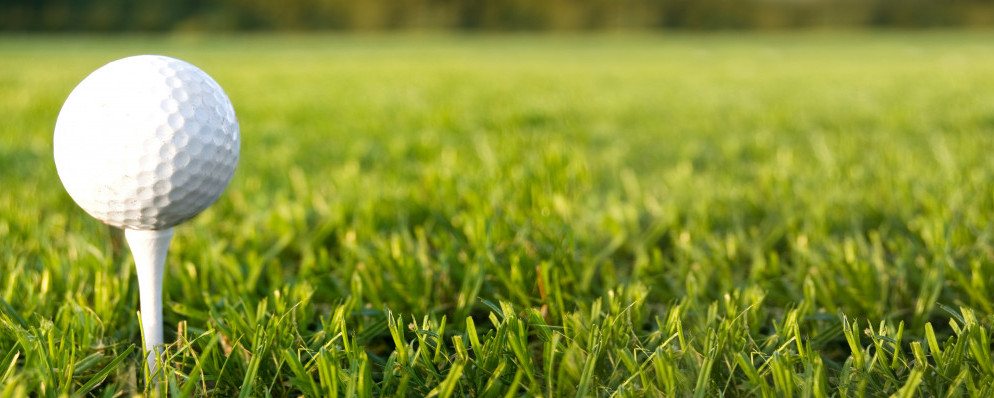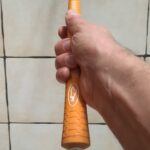Grip is, as I have said previously, one of the fundamentals of a sound golf swing. There are a range of possible grips, all of which can be effective. One question that often comes up is strong vs weak golf grip. What is the difference, which one should you adopt and ultimately, does it make a difference at all?
- One size doesn’t fit all
- Strong left-hand or right-hand?
- Grip and swing are closely linked
- Grip can be used to affect ballflight
There isn’t Just One Golf Grip
Best to get this one out of the way right from the off. As much as grip is essential for good golf, there isn’t a right and wrong way of doing this. People have won major championships with all sorts of grips. In 2022, Englishman Matt Fitzpatrick won the US open chipping with a cross-handed grip. Golfers have had successful professional careers using a baseball grip. Bubba Watson famously has his grips put on twisted, essentially setting his club naturally 10 degrees or so open to counter his strong grip. Johnny Miller would have completely the opposite view. Saying that one or any of these great players is wrong is evidently ridiculous.
The first grip lesson that we can take away here is that it is a deeply personal thing. The hands are the point of connection to the club and is it doesn’t feel right, it almost certainly isn’t going to work. This doesn’t mean that anything goes however. A lot of the examples above are either because that particular golfer made the grip work because of their swing or because a change might have been forced upon them by injury or circumstance.
Matt Fitzpatrick would, I am sure, prefer not to chip with his hands the other way around. He was already someone with a solid short game. Simply, as is the case with many people and their choice of putting stroke, he thought that switching his hands could make it even better. His year-long statistics as well as his major win would seem to show that he was right.
Bubba Watson has one of the most unique swings on tour. He also loves to work the ball both ways. His particular grip fits in with his swing and what he, one of the most talented golfers on the planet, want to do with the ball.
What Exactly is a Strong Grip?
We also need to be careful exactly what we mean when we talk about strong or weak grips. Both hands on the club can potentially be in a stronger or weaker position. If we take a right-handed golfer as an example (and obviously just invert for a lefty) when we talk about a strong grip, we are usually talking about the right-hand being further to the right, sometimes almost underneath the golf grip.
But what about the left-hand? It can also have a strong grip. A strong left-hand means that it is rotated to the left, again taking it potentially almost under the club. We often talk about how many knuckles we can see at address to define just how weak or strong a grip is.
From this, you can see that a strong left-hand and a strong right-hand actually have almost opposite effects on the club. A strong right-hand will rotate the clubface closed generally and a strong left-hand will do just the opposite. Just to add to the confusion, we can have any combination of strong and weak for both hands!
For the purpose of this article, let’s keep it simple. What most golfers mean by strong grip is the right-hand for a right-handed golfer rotating to the right and closing (potentially) the club face.
Grip and Swing are Linked
This brings us to the next point in relation to weak or strong grips. The grip you use is going to be part of the whole golf swing. It doesn’t work independently. This is something that I have found very true in my own game and the game of others I see on the course.
As an example, I play with a friend who has the strongest grip I have ever seen. It looks almost like he is aiming off to the immediate left as he addresses the ball. However, he actually hits a fade. This might be surprising until we think about this ultra-strong grip in relation to the whole of his swing. He stands very upright at address and, despite being a steady enough golfer at around 15 handicap, he has the typical beginner swing path of very out to in, cutting across the ball.
For him, a very strong grip is simply a compensation that prevents all his shots disappearing off the planet to the right. Now we can argue that he would be better served by working on his swing path, making it a little more neutral. Then perhaps having a slightly less-upright stance. And finally he could work on weakening his grip slightly. The results, over time, would probably be a more neutral ball flight and more consistent golf.
However, this particular golfer isn’t interested in going through that process. His strong grip is quite an effective band-aid to compensate for other swing ‘faults’.
Another example comes from my own game. I used to hit a gentle fade with my irons. This was a consistent shot for me. I hit the ball solidly and fairly long. I didn’t really leak the ball to the right either. It was a nice, solid shot that dropped a few yards to the right. As my handicap headed towards single figures, I decided that good golfers should hit a draw. This wasn’t a shot I had in my bag and, after a bit of experimentation, I found that the best way to make it work for me was by strengthening my grip.
Use Your Grip to Change Ballflight
I did this progressively until I had a solid draw. However, over time, this draw could become a dangerous hook when it went wrong and that particular miss can be a very expensive one on the scorecard. As I looked for the reasons why this shot had crept into my game, I realised that my grip had become very strong indeed. So I began the reverse journey, gradually weakening it again.
This worked well until a year or two ago, I noticed that I now had shots where I thought I had made solid connection but the ball floated off finished short and right. Once again, my grip had traveled back to far in the other direction and was not very weak. You can guess which direction I am going in right now with my game!
There are a couple of important points in here. Firstly, there is no best grip. At different times in my own golfing journey, weak or strong was the right choice. Secondly, when you change your grip, think about why you are doing it and use moderation. You don’t need to move from one extreme to the other. Try just a slight rotation on the club and see what happens. Even a small difference usually feels very unnatural and will take time to integrate. It will also have an effect on both ball striking and ball flight so be patient and take the time to feel at ease with it.
The last point is, I think, the most interesting one and it is this: grip is a tool you can use. I have been working on my driver over the last couple of seasons. I went through a longish period of leaving the driver at home because I had no control over it all. Now, I feel like it is a weapon and one that I can use in different situations. If I need a gentle fade, I can do that (or at least try). If it needs a draw, I have a method for that too. What is the difference? Mainly grip. By strengthening or weakening my grip slightly and adjusting my stance, I am having some success in shaping my shots under control.
Rather than worrying about strong grip vs weak grip, perhaps it is better to have both as potential tools in the bag depending on situation.





